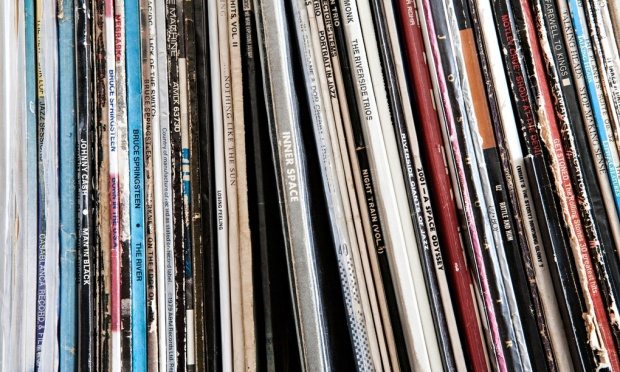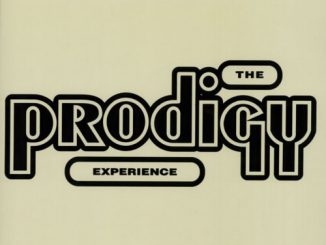
We live in the digital era, yet the desire for tangible, physical objects persists, with companies reporting good sales when they combine the two worlds

There is something unique and magical about interacting with physical objects. From toddlers discovering the world around them to the texture and pungent scent of a book. We live in the digital era but the latest trends in digitally-dominated markets, such as the entertainment industry, indicate strong sales for analogue products.
Latest figures of music sales on vinyl reveal a surprising resurgence of analogue music. Vinyl sales accounted for £20m in 2014, six times more than in 2011 and manufacturers of vinyl records are struggling to keep up with the demand.
Blending physical and digital play
Similarly physical real-world game pieces are a popular addition to video games. Large game studios are merging the separate worlds of video games and toys into exciting seamless experiences, including titles such as Activision’s Skylanders andDisney’s Infinity. And, old school video game console companies, such as Nintendo, are launching similar products like the Amiibo. Although very different games, both have two things in common.
Firstly, they all have been a massive success. Skylanders has sold 175m toys and reached the top 20 highest-selling video game franchises of all time. Disney Infinity’s success surprised even Disney, generating more than $500m from the sale of more than three million starter packs. And, Amiibos are flying off the shelves selling around 2.6 million in the first six months, which is twice the volume of sales achieved by Nintendo’s flagship Super Smash Bros franchise on the Wii U.
Secondly, they all include collectible interactive physical figurines, based on game characters, such as Mario in the case of Nintendo. These allow players to blend physical and digital play, by importing the characters (through digital communication technologies) to make them come alive into the video game world.
The appeal of physical toys in a digital game world has given rise to a whole new genre of hybrid phygital (physical and digital) games. It has managed to win over digitally-minded youngsters and shows real promise for its appeal to a more technologically-sceptical older generation.
Traditional toy and game companies, such as the Danish toy giant Lego, are moving in this direction too. With its new generation of Lego Fusion, Lego is turning real-world joy into digital fun. Using special bricks, that can be recognised by the Fusion app on iOS or Android, you can build real Lego buildings that come alive in a virtual world – think of it as a hybrid of Lego with Sim City.
Explaining the resurgence of analogue
So what is it about analogue that is driving the resurgence in an era dominated by digital music and games? It all comes down to several qualities only found when interacting with physical objects. It’s all about the experience. The warm and fuzzy feeling you get from buying and handling a physical object, something that you cannot simply discover from intangible digital music and game files.
It’s the inner child that you re-discover when you are engaging with a physical toy, its texture, shape, weight, colour, size. Seeing the connection between how your interactions with physical game pieces and physical figurines affect the digital game characters and virtual world.
It’s the fulfilling experience of putting a vinyl record onto the turntable and then flipping it over to indulge in the music on the other side and the perceived warmth and mood that makes music on vinyl sound so much better. Some aspects of analogue technology introduce unique artefacts and distortions, such as the scratching or hissing sound of a record, which adds character to it.
This is a trend which is also found on other digital mediums, such as digital cameras and photography – where imaging artefacts that existed in analogue cameras, such as ghosting, lens flare and fading colours are recreated and offered as special effects in modern-day cameras and apps.
It is not necessarily the crispness and accuracy of the audio, but the character, essence and ambience, which analogue brings to the table that people miss with digital technology. In the case of both games and music, the physicality and emotional connection with the physical figurine or toy and its packaging, or the fragile record and its album cover art, offer a more holistic, multisensory and intimate experience.
The issue of ownership
Digital music and games are easily and instantly accessible through services such as iTunes, Spotify, and Google Play, and portable across different electronic devices, yet they still remain intangible.
This raises the issue of ownership, which is often muddled in the digital domain. Due to the immateriality of digital content and its storage in the cloud people are losing the sense of ownership. Think about the digital music, digital games and e-books you own. Do you really own them or rather have licence to use them?
The increasing comeback and adoption of analogue offers the possibility of having a more personal connection to the music, games or books we own and gives us the chance to create physical collections. Indeed, it is often because game figurines and vinyl records are collectible that they appeal the most to consumers of all ages.
Importantly, when you own something you can share it with others. By making play physical, collaborative and intergenerational play is encouraged, as physical pieces of the game can be enjoyed by young and old without the need to master any digital skills. By the same token, physical records allow the music experiences to be shared with friends.
The resurgence of analogue shows us that although we live in a digital age we still place a lot of value on physical experiences. Therefore the comeback is not simply a nostalgia for the past, but instead a driving force of a post-digital era, where a new hybrid physical and digital – phygital – future is emerging.
Dr Emmanuel Tsekleves is a senior lecturer at Lancaster University
Taken from the Guardian Website
Get a bit of analogue in your life, visit eil.com for an incredible range of vinyl, full details here




Vinyls are much much better than digital. Better sound, stage 3d depth, emotion and not the harsh top end you get with digital. Digital music is for car hifi and mp3 players. Not for serious hifi.
Music I don’t own,music from a piece of plastic is not for me.I love attending record fairs and getting excited on finding a rare album.Then I can’t wait to get home and place these rarities on my Scott or Micro Seiki .That is my music experience which I love